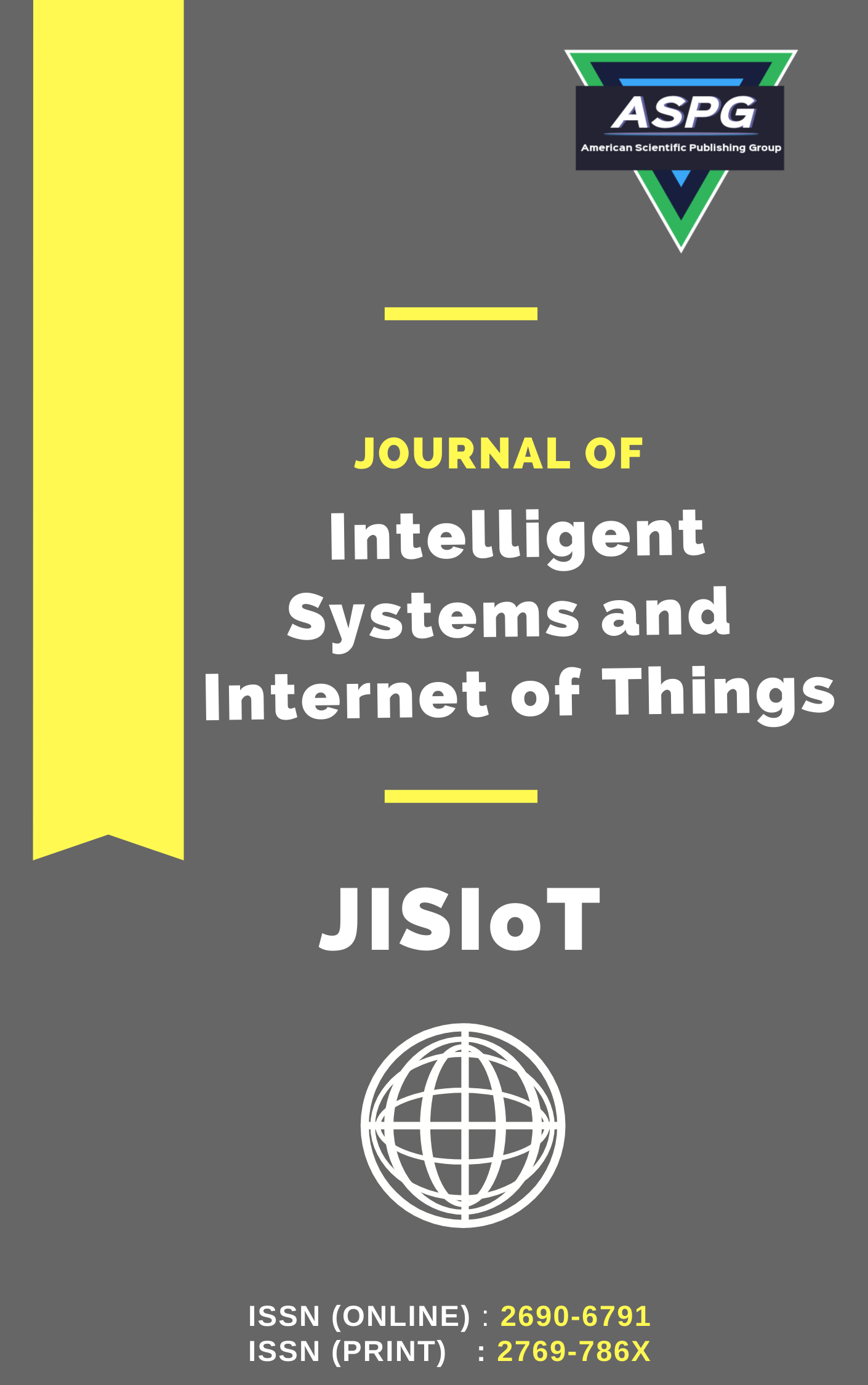

Volume 17 , Issue 1 , PP: 16-26, 2025 | Cite this article as | XML | Html | PDF | Full Length Article
Golden Nancy 1 , E. Bhuvaneswari 2 , Venkatesan R. 3 *
Doi: https://doi.org/10.54216/JISIoT.170102
This study introduces a novel deep learning-driven multi-layer digital twin framework, underpinned by the Model-Integration-Optimization-Testing (MIOT) methodology, to advance precision oncology in cancer diagnosis. The innovation lies in integrating multi-layered data, including molecular, clinical, and imaging modalities, into a patient-specific digital twin ecosystem. By combining deep learning with the MIOT framework, the proposed approach enables dynamic and predictive modelling tailored to individual patient profiles, facilitating simulations of tumor progression, diagnostic insights, and personalized treatment optimization. Pre-processing pipelines standardize the heterogeneous data, while convolutional and Recurrent Neural Networks (RNN) extract high-level features from imaging and sequential data, respectively. The MIOT framework ensures a systematic design process: deep learning architectures like U-Net, DenseNet, and transformers are employed for tasks such as tumor segmentation, classification, and survival prediction. Data integration pipelines connect the digital twin seamlessly with clinical diagnostic tools to ensure interoperability. Multi-objective optimization algorithms, including evolutionary strategies and reinforcement learning, guide the digital twin in recommending personalized diagnostic and therapeutic pathways. State-of-the-art performance is demonstrated by rigorous validation on benchmark datasets, which yielded 96.3% diagnosis accuracy, 94.8% sensitivity, and 95.6% specificity across many tumor subtypes.
Digital Twin , MIOT , Cancer , Deep Learning , Precision Oncology , CNN , RNN
[1] N. Aguilar-Blas, I. Chairez, and A. Cabrera, "Differential neural network based adaptive average output feedback control design for dosage determination on cancer based immunotherapy treatment," Applied Soft Computing, vol. 112368, 2024, doi: 10.1016/j.asoc.2024.112368.
[2] S. G. Armato III, G. McLennan, L. Bidaut, M. F. McNitt‐Gray, C. R. Meyer, A. P. Reeves, and L. P. Clarke, "The lung image database consortium (LIDC) and image database resource initiative (IDRI): a completed reference database of lung nodules on CT scans," Medical Physics, vol. 38, no. 2, pp. 915-931, 2011, doi: 10.1118/1.3528204.
[3] S. Batool and S. Zainab, "A comparative performance assessment of artificial intelligence based classifiers and optimized feature reduction technique for breast cancer diagnosis," Computers in Biology and Medicine, vol. 183, p. 109215, 2024, doi: 10.1016/j.compbiomed.2024.109215.
[4] B. E. Bejnordi et al., "Diagnostic assessment of deep learning algorithms for detection of lymph node metastases in women with breast cancer," JAMA, vol. 318, no. 22, pp. 2199-2210, 2017, doi: 10.1001/jama.2017.14585.
[5] B. Björnsson et al., "Digital twins to personalize medicine," Genome Medicine, vol. 12, pp. 1-4, 2020, doi: 10.1186/s13073-019-0701-3.
[6] K. Bruynseels, F. Santoni de Sio, and J. Van den Hoven, "Digital twins in health care: ethical implications of an emerging engineering paradigm," Frontiers in Genetics, vol. 9, p. 31, 2018, doi: 10.3389/fgene.2018.00031.
[7] T. Chen and C. Guestrin, "XGBoost: A scalable tree boosting system," in Proceedings of the 22nd ACM SIGKDD International Conference on Knowledge Discovery and Data Mining, 2016, pp. 785-794, doi: 10.1145/2939672.2939785.
[8] D. Chicco, "Ten quick tips for machine learning in computational biology," BioData Mining, vol. 10, no. 1, p. 35, 2017, doi: 10.1186/s13040-017-0155-3.
[9] N. C. Codella et al., "Skin lesion analysis toward melanoma detection: A challenge at the 2017 International Symposium on Biomedical Imaging (ISBI), Hosted by the International Skin Imaging Collaboration (ISIC)," in 2018 IEEE 15th International Symposium on Biomedical Imaging (ISBI 2018), 2018, pp. 168-172, doi: 10.1109/ISBI.2018.8363547.
[10] X. Jiang, Z. Hu, S. Wang, and Y. Zhang, "Deep learning for medical image-based cancer diagnosis," Cancers, vol. 15, no. 14, p. 3608, 2023, doi: 10.3390/cancers15143608.
[11] B. Kannappan, J. R. MariaNavin, N. Sridevi, and P. Suresh, "Data augmentation guided breast tumor segmentation based on generative adversarial neural networks," Engineering Applications of Artificial Intelligence, vol. 125, p. 106753, 2023, doi: 10.1016/j.engappai.2023.106753.
[12] A. K. Sharma, R. P. Singh, and L. K. Gupta, "A comprehensive review on deep learning techniques for medical image analysis," Journal of Medical Systems, vol. 45, no. 3, p. 45, 2021, doi: 10.1007/s10916-021-01780-3.
[13] G. Litjens et al., "A survey on deep learning in medical image analysis," Medical Image Analysis, vol. 42, pp. 60-88, 2017, doi: 10.1016/j.media.2017.07.005.
[14] S. Mavaddati, "Skin cancer classification based on a hybrid deep model and long short-term memory," Biomedical Signal Processing and Control, vol. 100, p. 107109, 2025, doi: 10.1016/j.bspc.2024.107109.
[15] Y. Ni et al., "Active learning based on multi-enhanced views for classification of multiple patterns in lung ultrasound images," Computerized Medical Imaging and Graphics, vol. 118, p. 102454, 2024, doi: 10.1016/j.compmedimag.2024.102454.
[16] O. Ronneberger, P. Fischer, and T. Brox, "U-Net: Convolutional networks for biomedical image segmentation," in Medical Image Computing and Computer-Assisted Intervention–MICCAI 2015: 18th International Conference, Munich, Germany, 2015, pp. 234-241, doi: 10.1007/978-3-319-24574-4_28.
[17] W. Samek, T. Wiegand, and K. R. Müller, "Explainable Artificial Intelligence: Understanding, Visualizing and Interpreting Deep Learning Models," Nature Machine Intelligence, vol. 3, pp. 522–534, 2021, doi: 10.48550/arXiv.1708.08296.
[18] F. A. Spanhol et al., "Breast cancer histopathological image classification using convolutional neural networks," in 2016 International Joint Conference on Neural Networks (IJCNN), 2016, pp. 2560-2567, doi: 10.1109/IJCNN.2016.7727519.
[19] H. Sung et al., "Global cancer statistics 2020: GLOBOCAN estimates of incidence and mortality worldwide for 36 cancers in 185 countries," CA: A Cancer Journal for Clinicians, vol. 71, no. 3, pp. 209-249, 2021, doi: 10.3322/caac.21660.
[20] P. Vincent, H. Larochelle, Y. Bengio, and P. A. Manzagol, "Extracting and composing robust features with denoising autoencoders," in Proceedings of the 25th International Conference on Machine Learning, 2008, pp. 1096-1103, doi: 10.1145/1390156.1390294.
[21] J. N. Weinstein et al., "The cancer genome atlas pan-cancer analysis project," Nature Genetics, vol. 45, no. 10, pp. 1113-1120, 2013, doi: 10.1038/ng.2764.
[22] K. Zhang et al., "Concepts and applications of digital twins in healthcare and medicine," Patterns, vol. 5, no. 8, 2024, doi: 10.1016/j.patter.2024.101028.
[23] K. Gunasekaran et al., "An efficient cardiovascular disease prediction using multi-scale weighted feature fusion-based convolutional neural network with residual gated recurrent unit," Computer Methods in Biomechanics and Biomedical Engineering, vol. 27, no. 9, pp. 1181–1205, 2024, doi: 10.1080/10255842.2024.2339475.